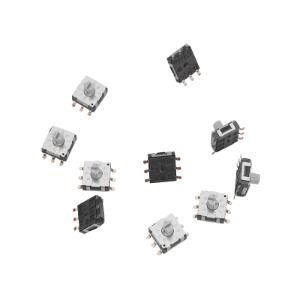 2025.10.29
2025.10.29
 News
News
Characteristics of Automotive Plastic Parts Mold

1. Precision and Tolerances
One of the primary characteristics of Automotive Plastic Parts Mold is its precision. The molds must be designed and manufactured with high accuracy to ensure that the plastic parts produced meet stringent specifications. The tolerances in the mold dimensions directly impact the fit, function, and aesthetics of the final product. High-precision molds are essential for maintaining consistency across all parts produced, which is critical in an industry where even minor deviations can performance issues or safety concerns.
2. Durability and Longevity
The molds used in the automotive industry must be durable and have a long lifespan. Automotive Plastic Parts Mold is subjected to high pressures and temperatures during the injection molding process. The mold materials and construction must be able to withstand these conditions over extended periods without losing their shape or performance. This durability ensures that the mold can produce a large number of parts without the need for frequent replacements or repairs, reducing costs and downtime.
3. Surface Finish and Detail
The surface finish of the plastic parts produced by Automotive Plastic Parts Mold is another critical characteristic. The molds must be able to replicate intricate details and provide a smooth finish on the final product. This is particularly important for parts that are visible or have a significant impact on the vehicle's aesthetics. Advanced mold technologies and surface treatments are employed to achieve the desired finish, ensuring that the parts meet the high standards of the automotive industry.
Materials of Automotive Plastic Parts Mold
1. Steel
Steel is the common material used for Automotive Plastic Parts Mold due to its strength, durability, and heat resistance. Different grades of steel are selected based on the specific requirements of the part being produced. For instance, high-strength steel is used for molds that will produce parts under high stress, while stainless steel might be chosen for its corrosion resistance. The choice of steel also influences the mold's ability to withstand the wear and tear of repeated use.
2. Aluminum
Aluminum is another material sometimes used for Automotive Plastic Parts Mold, especially for prototype or low-volume production. It offers advantages such as lower weight and faster cooling times, which can shorter cycle times and increased production efficiency. However, aluminum may not be as durable as steel, and it may not be suitable for high-stress or high-temperature applications.
3. Polymers
In some cases, polymer materials are used for Automotive Plastic Parts Mold, particularly for specific applications where the mold itself is a disposable or short-lived component. Polymer molds can be less expensive to produce and can offer design flexibility, but they typically have a shorter lifespan and may not be suitable for high-volume production runs.
Key Features of Automotive Plastic Parts Mold
1. Temperature Control
Effective temperature control is a key feature of Automotive Plastic Parts Mold. The mold must be able to maintain a consistent temperature throughout the injection molding process to ensure the plastic is evenly distributed and the part is properly formed. This is achieved through the use of cooling channels within the mold, which circulate coolant to regulate the temperature.
2. Ejection System
The ejection system is another important feature of Automotive Plastic Parts Mold. It is responsible for removing the finished part from the mold cavity after the plastic has cooled and solidified. A well-designed ejection system ensures that the parts are removed without damage, and it contributes to the overall efficiency of the molding process.
3. Venting and Runner Systems
Proper venting and runner systems are crucial for the efficient operation of Automotive Plastic Parts Mold. Vents allow air and gases to escape from the mold cavity as the plastic is injected, preventing defects in the final part. Runner systems, on the other hand, are the channels through which the molten plastic is delivered to the mold cavity. Their design affects the fill time, pressure distribution, and overall quality of the molded part.